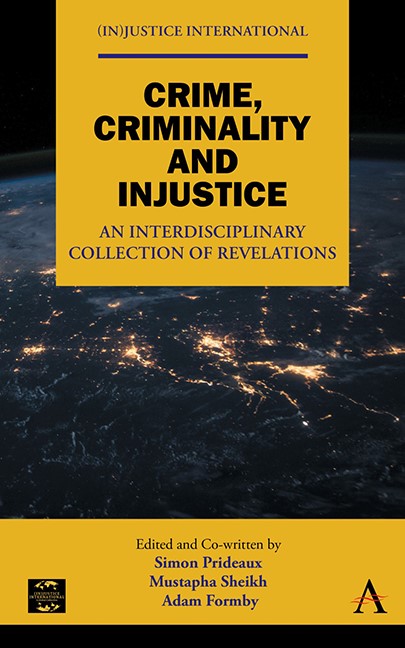Book contents
- Frontmatter
- Dedication
- Contents
- Acknowledgements
- List of Editors and Contributors
- Editor’s Introduction to the Book
- Part One Incarceration, Cultural Destruction and Ecocide: The Alienation of Ethnic Minorities, Nature and Indigenous Peoples
- Part Two The Impoverishment, Exclusion and Maltreatment of the Working Poor
- Part Three Disability, Poverty and Neglect
- Part Four Youth, Gender, Migration and Human Trafficking
- Concluding Remarks
- Index
Chapter Four - Austerity Britain: A Case Study of State Crimes against the Working Poor
Published online by Cambridge University Press: 14 November 2023
- Frontmatter
- Dedication
- Contents
- Acknowledgements
- List of Editors and Contributors
- Editor’s Introduction to the Book
- Part One Incarceration, Cultural Destruction and Ecocide: The Alienation of Ethnic Minorities, Nature and Indigenous Peoples
- Part Two The Impoverishment, Exclusion and Maltreatment of the Working Poor
- Part Three Disability, Poverty and Neglect
- Part Four Youth, Gender, Migration and Human Trafficking
- Concluding Remarks
- Index
Summary
An Introduction to Austerity
Austerity is a method of fiscal management whereby policies are implemented to reduce the State deficit through a reduction of public expenditure and/or tax increases (Oxfam 2013; Knox 2017). Many countries have employed austerity tactics when they were struggling to repay loans (Blyth 2013; Dorling 2017). However, the subject has been a particular focal point in the United Kingdom for politicians and media representatives alike. For over a decade, it continued to be a pressing and polarising discussion where advocates of austerity contended it was a necessary measure to restore and maintain the economy. By contrast, critics believed that it would cause untold social harm whilst also failing to achieve its economic goals (Blyth 2013; Oxfam 2013; Allen 2018).
Indeed, austerity policies have been a defining feature of the UK Conservative Government since 2010 (Blyth 2013; Allen 2017). Following the 2008 financial crash, spending cuts were rolled out extensively across a majority of public sectors in the United Kingdom in an attempt to offset some of the economic damage caused by the ‘crash’ (Blyth 2013; Alcock 2014). Since then, disparity between the richest and poorest has increased exponentially (Pickett and Wilkinson 2010; Jones 2011; Dorling 2017) and people at the bottom of the socio-economic ladder have suffered to such an extent that the United Nations (UN) have labelled it a breach of human rights agreements (Inter-Parliamentary Union 2016). Although austerity was not a solely British approach, this chapter focuses on its implementation in the United Kingdom. Accordingly, the chapter will evaluate whether or not austerity should be considered a crime by exploring its history, ideological underpinnings, the socio-economic impacts and the various forms of social harm caused.
Historical Context and the Rise of Neoliberalism
To contextualise austerity, the welfare State – which was a Keynesian concept introduced to the United Kingdom in the wake of World War Two – has to be considered (Rojek 2003; Alcock 2014; Umney 2018) as it was built on goals such as protecting ‘the most vulnerable populations, and […] [reducing] the most glaring inequalities’ in society (Wacquant 2009:5), whilst also aiming to stimulate economic growth through increased spending and labour market participation (Oxfam 2013; Alcock 2014; Klein 2014; Picketty 2014).
- Type
- Chapter
- Information
- Crime, Criminality and InjusticeAn Interdisciplinary Collection of Revelations, pp. 63 - 80Publisher: Anthem PressPrint publication year: 2023

